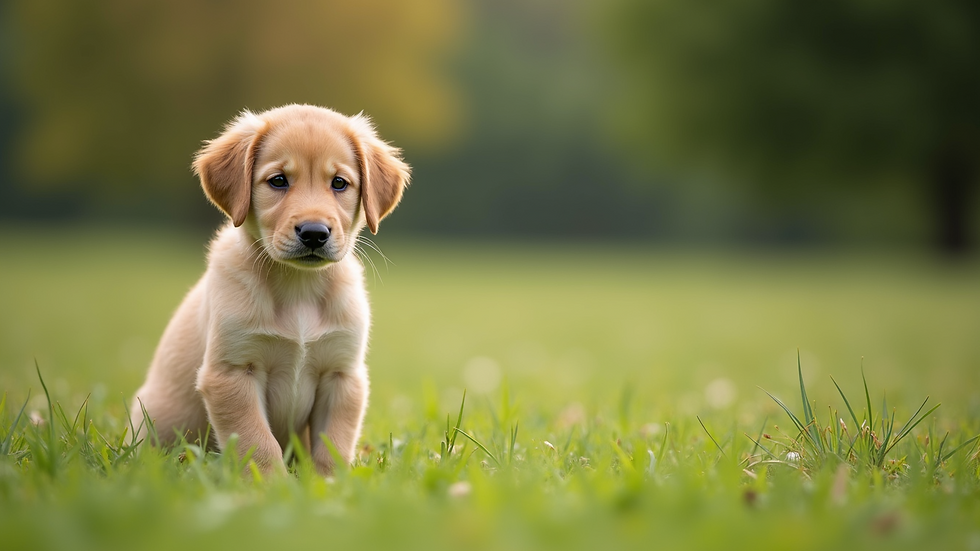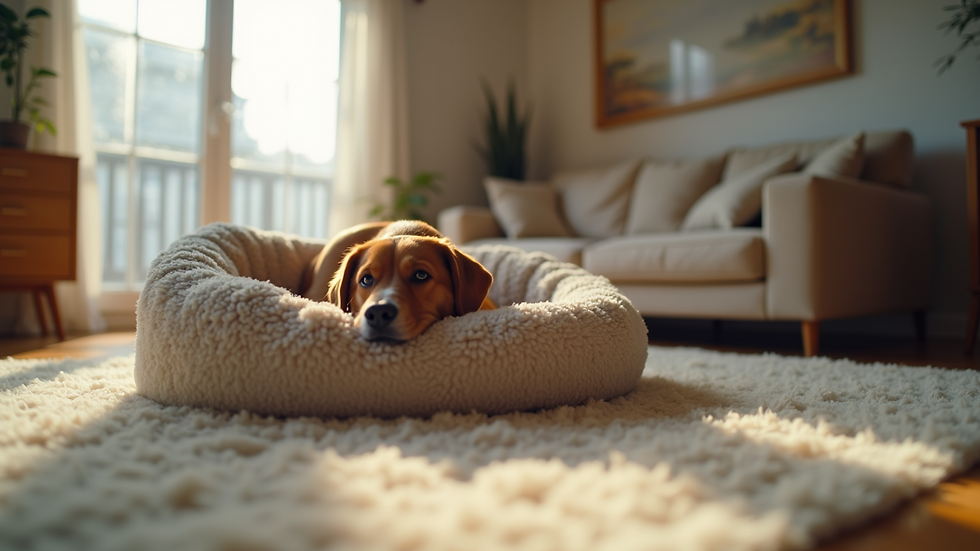Ultimate Guide to Puppy Training Tips and Tricks
- 4242 Baixar – SITE OFICIAL BRASIL
- Aug 8
- 4 min read
Bringing a puppy into your home is an exciting adventure. These little bundles of joy can fill your life with love and laughter. However, they also come with their own set of challenges. Training your puppy is essential for a happy and harmonious household. In this ultimate guide, we will explore effective puppy training tips and tricks that will help you raise a well-behaved dog.
Puppy training is not just about teaching commands. It is about building a strong bond with your furry friend. This guide will cover everything from basic commands to socialization and potty training. Let’s dive in!
Understanding Your Puppy
Before you start training, it is important to understand your puppy's behavior. Puppies are curious and energetic. They explore the world with their mouths and paws. This can lead to unwanted behaviors, such as chewing on furniture or barking excessively.
Key Puppy Behaviors
Chewing: Puppies chew to relieve teething pain and explore their environment.
Barking: Barking is a way for puppies to communicate. They may bark when they are excited, scared, or bored.
Jumping: Puppies often jump to greet people. This behavior can be cute but may become problematic as they grow.
Understanding these behaviors will help you address them effectively during training.
Basic Commands
Teaching your puppy basic commands is the foundation of training. Here are some essential commands to start with:
Sit
Hold a treat close to your puppy's nose.
Move your hand up, allowing their head to follow the treat. This will cause their bottom to lower.
Once they are in a sitting position, say "Sit" and give them the treat.
Repeat this several times until your puppy masters the command.
Stay
Ask your puppy to sit.
Open your palm in front of you and say "Stay."
Take a few steps back. If your puppy stays, reward them with a treat.
Gradually increase the distance and duration of the stay.
Come
Put a leash on your puppy and let them wander a bit.
Crouch down and say "Come" in a cheerful voice.
When they come to you, reward them with a treat and praise.
Practice this command in a safe, enclosed area.
Potty Training
Potty training is one of the first things you should tackle with your new puppy. Here are some effective tips:
Establish a Routine
Take your puppy outside first thing in the morning, after meals, and before bedtime.
Choose a specific spot outside for them to do their business.
Use Positive Reinforcement
When your puppy goes potty outside, praise them and give them a treat.
If they have an accident indoors, clean it up without scolding them. Take them outside immediately after.
Be Patient
Accidents will happen. Be patient and consistent with your training.
Keep a close eye on your puppy indoors. If you see signs they need to go, take them outside right away.
Socialization
Socializing your puppy is crucial for their development. Exposing them to different people, pets, and environments will help them become well-adjusted adults.
Puppy Classes
Enroll your puppy in a puppy training class. This is a great way for them to meet other dogs and learn basic commands in a controlled environment.
Safe Exposure
Take your puppy on walks in different neighborhoods. Introduce them to various sounds, sights, and smells.
Arrange playdates with other vaccinated dogs to help them learn social skills.
Dealing with Unwanted Behaviors
Every puppy will exhibit some unwanted behaviors. Here are some common issues and how to address them:
Excessive Barking
Identify the cause of the barking. Is your puppy bored, anxious, or trying to get attention?
Provide plenty of exercise and mental stimulation to reduce boredom.
Teach the "Quiet" command by rewarding them when they stop barking.
Chewing
Provide plenty of chew toys to satisfy their need to chew.
If they chew on furniture, redirect them to a toy and praise them when they use it.
Jumping
Ignore your puppy when they jump. Wait until they are calm before giving them attention.
Teach them to sit when greeting people. Reward them for staying calm.
Advanced Training Techniques
Once your puppy has mastered the basics, you can move on to advanced training techniques. These can help keep your dog mentally stimulated and engaged.
Clicker Training
Clicker training uses a small device that makes a clicking sound to mark desired behaviors.
When your puppy performs a command correctly, click the device and give them a treat.
This method helps reinforce positive behavior and can be used for various tricks.
Agility Training
Agility training is a fun way to bond with your dog while providing physical exercise.
Set up a simple obstacle course in your backyard using cones, tunnels, and jumps.
Encourage your puppy to navigate the course and reward them for completing it.
Health and Nutrition
Training is not just about commands and behaviors. A healthy puppy is a happy puppy. Ensure your puppy receives proper nutrition and regular vet check-ups.
Balanced Diet
Feed your puppy high-quality dog food that meets their nutritional needs.
Consult your veterinarian for recommendations based on your puppy's breed and age.
Regular Exercise
Puppies have a lot of energy. Make sure they get plenty of exercise through walks, playtime, and training sessions.
Regular exercise helps prevent behavioral issues and keeps your puppy healthy.
Building a Strong Bond
Training is an opportunity to build a strong bond with your puppy. Here are some tips to strengthen your relationship:
Spend Quality Time Together
Engage in activities your puppy enjoys, such as playing fetch or going for walks.
Use training sessions as a way to connect and have fun together.
Be Consistent
Consistency is key in training. Use the same commands and rewards to avoid confusing your puppy.
Establish a routine for feeding, potty breaks, and training sessions.
Final Thoughts
Training your puppy is a rewarding journey that requires patience, consistency, and love. By following these tips and tricks, you can raise a well-behaved and happy dog. Remember, every puppy is unique, so be flexible and adjust your training methods as needed.
Enjoy the process, and cherish the moments you share with your furry friend. With time and effort, you will create a strong bond that lasts a lifetime.

Your puppy is not just a pet; they are a part of your family. Embrace the challenges and celebrate the successes. Happy training!






Comments